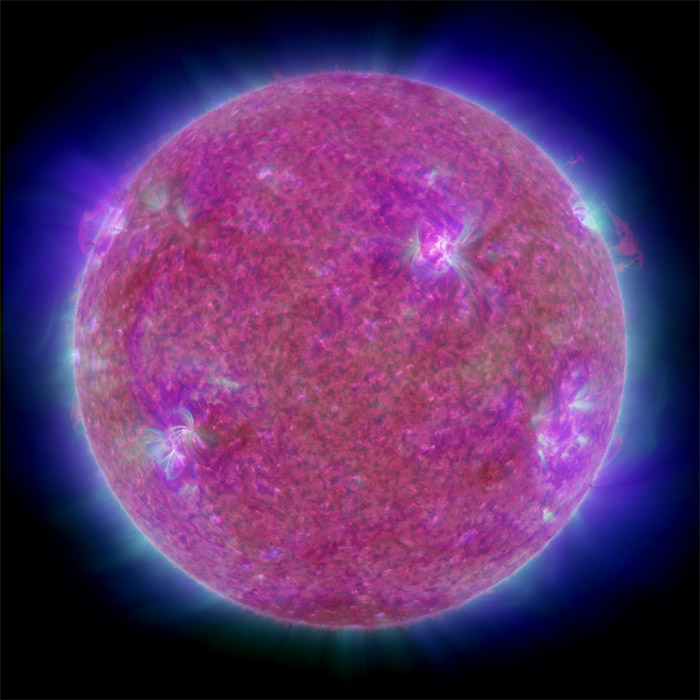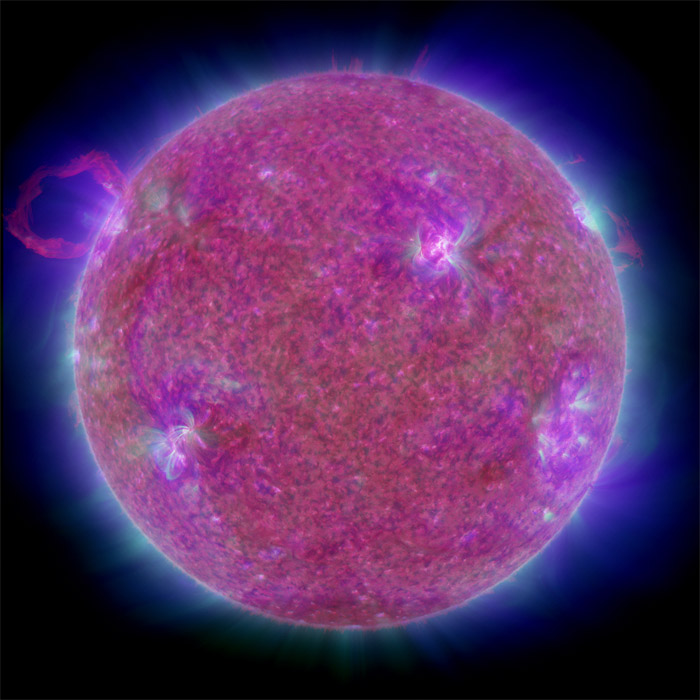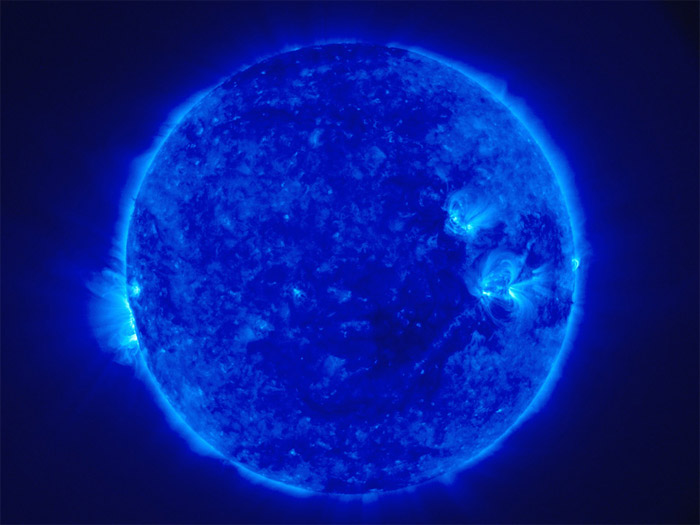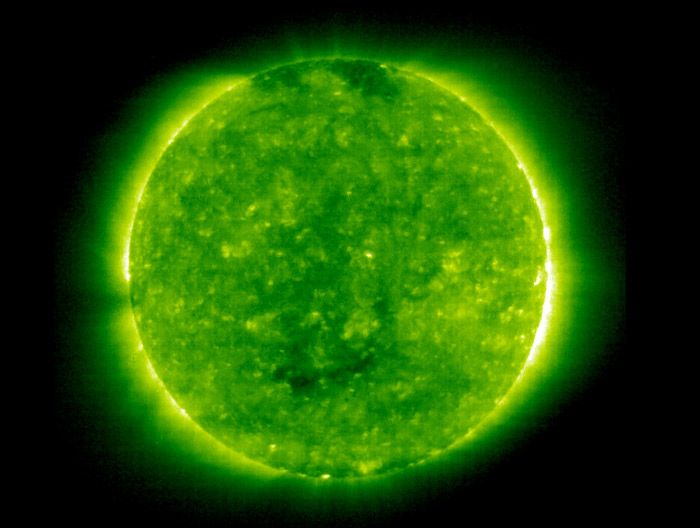Pardeep
๑۩۩๑┼●ℛŐŶ

In this x-ray photo provided by NASA, the sun is shown early in the morning of Sunday, August 1, 2010. The dark arc near the top right edge of the image is a filament of plasma blasting off the surface - part of the coronal mass ejection. The bright region is an unassociated solar flare. When particles from the eruption reach Earth on the evening of August 3-4, they may trigger a brilliant auroral display known as the Northern Lights. (Photo: AP/NASA)
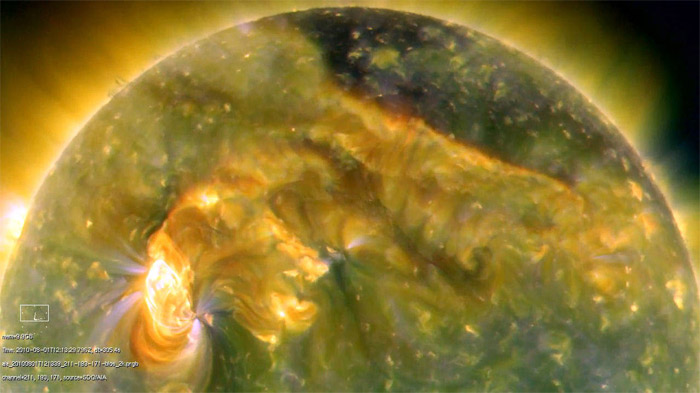
On August 1st, almost the entire Earth-facing side of the sun erupted in a tumult of activity. There was a C3-class solar flare, a solar tsunami, multiple filaments of magnetism lifting off the stellar surface, large-scale shaking of the solar corona, radio bursts, a coronal mass ejection and more. This extreme ultraviolet snapshot from the Solar Dynamics Observatory shows the sun's northern hemisphere in mid-eruption. Different colors in the image represent different gas temperatures ranging from ~1 to 2 million degrees K. (Text and Photo: NASA/SDO)

On August 1st around 0855 UT, Earth orbiting satellites detected a C3-class solar flare. The origin of the blast was Earth-facing sunspot 1092. C-class solar flares are small and usually have few noticeable consequences here on Earth besides aurorae. This one has spawned a coronal mass ejection heading in Earth's direction. This new image from the Solar Dynamics Observatory's Atmospheric Imaging Assembly (AIA) shows in great detail a solar prominence taken from a March 30, 2010 eruption. The twisting motion of the material is the most noticeable feature. Launched on February 11, 2010, SDO is the most advanced spacecraft ever designed to study the sun. (Text and Photo: NASA/SDO)

Coronal mass ejections (or CMEs) are large clouds of charged particles that are ejected from the Sun over the course of several hours and can carry up to ten billion tons (1016 grams) of plasma. They expand away from the Sun at speeds as high as a million miles an hour. A CME can make the 93-million-mile journey to Earth in just three to four days. At the time of this snapshot taken on Friday, March 12, the eruptive prominence was over 700,000 km (420,000 miles across), over 50 times the Earth's diameter. That's like measuring the length of 50 Earth's standing side-by-side! Even more, the plasma was moving at a rate of over 75,000 km per hour (50,000 mph).(Text and Photo: NASA/SDO)
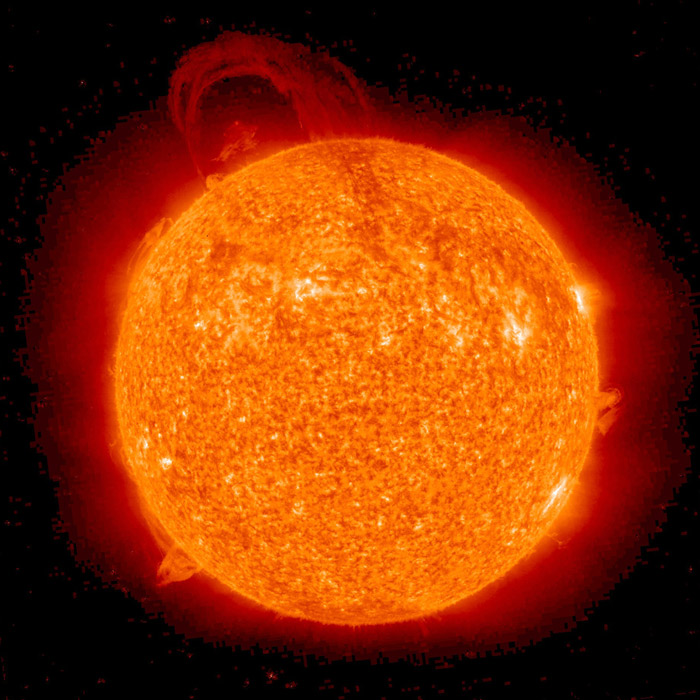
When a coronal mass ejection reaches Earth, it interacts with our planet's magnetic field, potentially creating a geomagnetic storm. Solar particles stream down the field lines toward Earth's poles and collide with atoms of nitrogen and oxygen in the atmosphere, resulting in spectacular auroral displays. The STEREO (Ahead) spacecraft caught this spectacular eruptive prominence in extreme UV light as it blasted away from the Sun (Apr. 12-13, 2010). This was certainly among the largest prominence eruptions seen by either NASA's STEREO or SOHO missions. (Text and Photo: NASA/SDO)
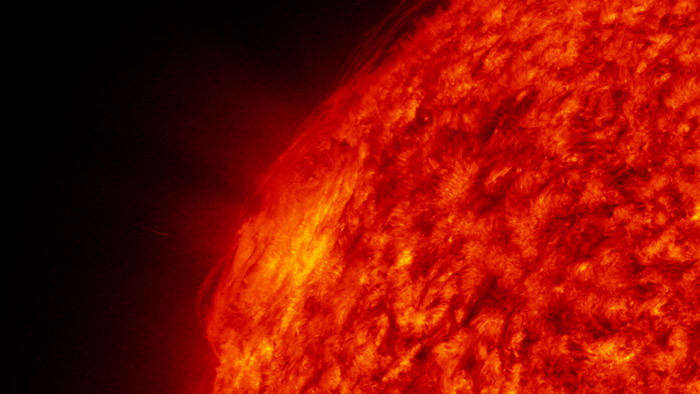
Scientists said residents of northern regions - from Maine to Michigan and anywhere farther north around the globe - may see unusual northern lights. Usually only regions closer to the Arctic can see the aurora of rippling reds and greens, but solar storms pull them south. A SDO/AIA Zoom-out photo sequence of Launching Filament (band 304). In the following photographs the view of the filament launch loops several times before pulling out to show the full solar disk. (Photo: NASA/SDO)
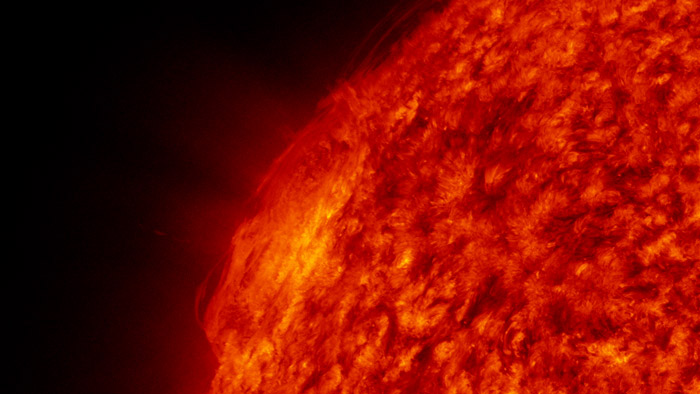
The federal Space Weather Prediction Center in Boulder, Colorado, said the plasma will likely arrive late Tuesday night or early Wednesday. The storms are not much of a threat to satellites or power grids. Until recently, the sun was in a phase with few storms. (Photo: NASA/SDO)

The Sun's "surface" - the photosphere - is a 500-kilometer-thick (300-mile-thick) region, from which most of the Sun's radiation escapes outward and is detected as the sunlight we observe here on Earth about eight minutes after it leaves the Sun.(Text and Photo: NASA/SDO)

Sunspots in the photosphere are areas with strong magnetic fields that are cooler, and thus darker, than the surrounding region. (Text and Photo Credit: NASA/SDO)







